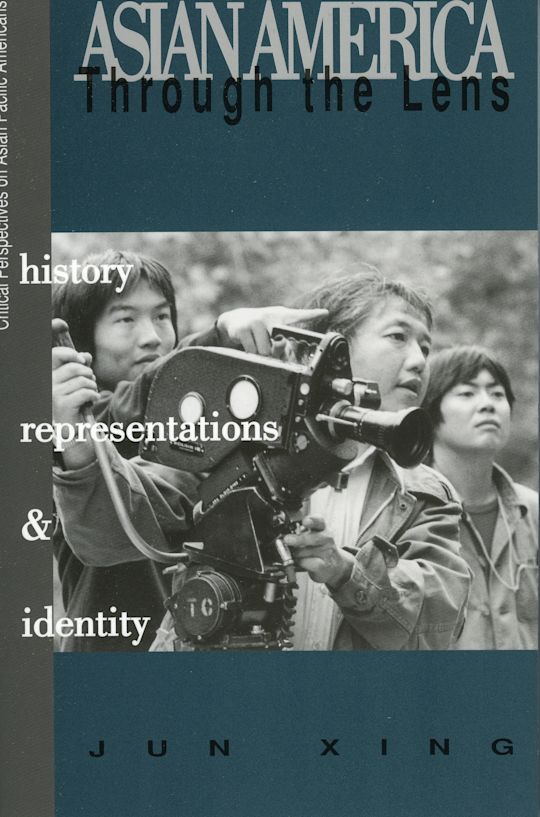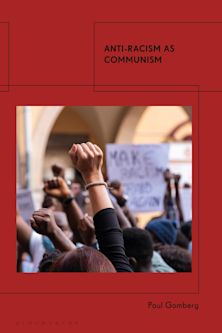- Home
- ACADEMIC
- Politics & International Relations
- Race and Ethnicity
- Asian America through the Lens
For information on how we process your data, read our Privacy Policy
Thank you. We will email you when this book is available to order
Buy from Bloomsbury eTextBooks
You are now leaving the Bloomsbury Publishing website. Your eBook purchase will be with our partner https://www.vitalsource.com.
Your credit card statement will show this purchase originating from VitalSource Technologies. They will also provide any technical assistance you might require.
You must sign in to add this item to your wishlist. Please sign in or create an account
Description
While some Asian American films and filmmakers are beginning to achieve acclaim in mainstream U.S. culture, neither academic scholars nor society as a whole has sufficiently taken account of the history of this rich and growing body of cinematic production. In Asian America Through the Lens, Jun Xing accomplishes the colossal task of surveying Asian American cinema for the first time, allowing its aesthetic, cultural, and political diversity and continuities to emerge. Unique insight into Asian American experience in both mainstream and alternative film production is provided by textual analysis as well as by the voices of filmmakers and actors themselves. With constant attention to the specificities of Asian American histories and cultures, Xing engages a broad range of issues and theoretical perspectives, drawing insight from such bodies of scholarship as African American and Latino film studies, Marxian cultural theory, ethnic studies and the politics of representation, and post-structuralist and feminist discourses.
Table of Contents
1. Cultural Essentialism and Asian American Films
chapter 2 2. Between a Weapon and a Formula
chapter 3 3. Asian American Aesthetics
chapter 4 II: Cinematic Asian Representation
1. Representation as Image
chapter 5 2. Politics of Representation
chapter 6 3. The Institution of Representation
chapter 7 III. Documentaries as Social History
1. History as Subject: Personal Diary Films and Family Portraits
chapter 8 2. History As Consciousness: Biographies and Communal Histories
chapter 9 3. History as Representation: Social-Issue Documentaries
chapter 10 IV: Hybrid Cinema by Asian American Women
1. Avant-Garde Film as History
chapter 11 2. Time and Subjectivity
chapter 12 3. Screen Space as Social Space
chapter 13 V: Conclusion
1. A Cinema in Transition: "Cross-Over" Films
chapter 14 2. Films from the Asian Diaspora
chapter 15 Appendix: Theories on Ethnicity and Film
chapter 16 Notes
chapter 17 Bibliography
chapter 18 Filmography
chapter 19 Index
Product details
| Published | 15 Jul 1998 |
|---|---|
| Format | Ebook (Epub & Mobi) |
| Edition | 1st |
| Extent | 248 |
| ISBN | 9780759117495 |
| Imprint | AltaMira Press |
| Series | Critical Perspectives on Asian Pacific Americans |
| Publisher | Bloomsbury Publishing |
Reviews
-
The sheer growth in number of Asian American independent films over the past few years requires a comprehensive critical survey of the work that is being generated....There is also a rapidly growing body of critical literature on Asian American film that Xing has mastered well and synthesizes for the reader. The author has 'done his homework' by providing an overview of related work on the topic, and in doing so carves out an important niche for his own contribution. His comparative analysis of the cinema practice of other nondominant groups such as African Americans and Latinos helps greatly in contextualizing Asian American film within the larger framework of marginalization or outright exclusion from the dominant media.
Darrell Y. Hamamoto, University of California, Davis
-
Combining history, cultural studies, and film criticism, Professor Jun Xing has written a masterful review and analysis of Asian American cinema. Concerned with what goes on behind as well as in front of the camera, he deals with the politics and economics as well as aesthetics of Asian American filmmaking. The work probes the complexity of ethnic identity and the protean character of ethnic representations, posing as many questions as it provides answers.
Rudolph J. Vecoli, Immigration History Research Center, University of Minnesota
-
The second half of the book is an uncommonly valuable study (and filmography) of Asian Americans in documentaries, family dramas, and experimental films. The fact that only five or six of the films are as popular as Joy Luck Club-most films discussed are 'virtually unknown to the average American'-is both the drawback and the value of this book....This is a useful guide to worthwhile movies.
P.H. Stacy, University of Hartford, Choice Reviews
-
It's a pleasure to read such a comprehensive and theoretically adept discussion of the emergence and development of an Asian American cinema practice and its attendant, critical discourses. For Xing's study comes at an opportune moment, since it is really needed in the classroom and the ongoing dialog between academics, critics, spectators, and students currently being generated by Asian American filmmaking. Asian American Through the Lens stands as the first project to cover such a broad critical and historical scope in its interrogation of Asian American cinema. Xing's book, then, makes a significant contribution to the broader multicultural project of 'unthinking Eurocentrism,' while defining the parameters of a vital, emergent cinema.
Ed Guerrero, Cinema Studies, New York University



































